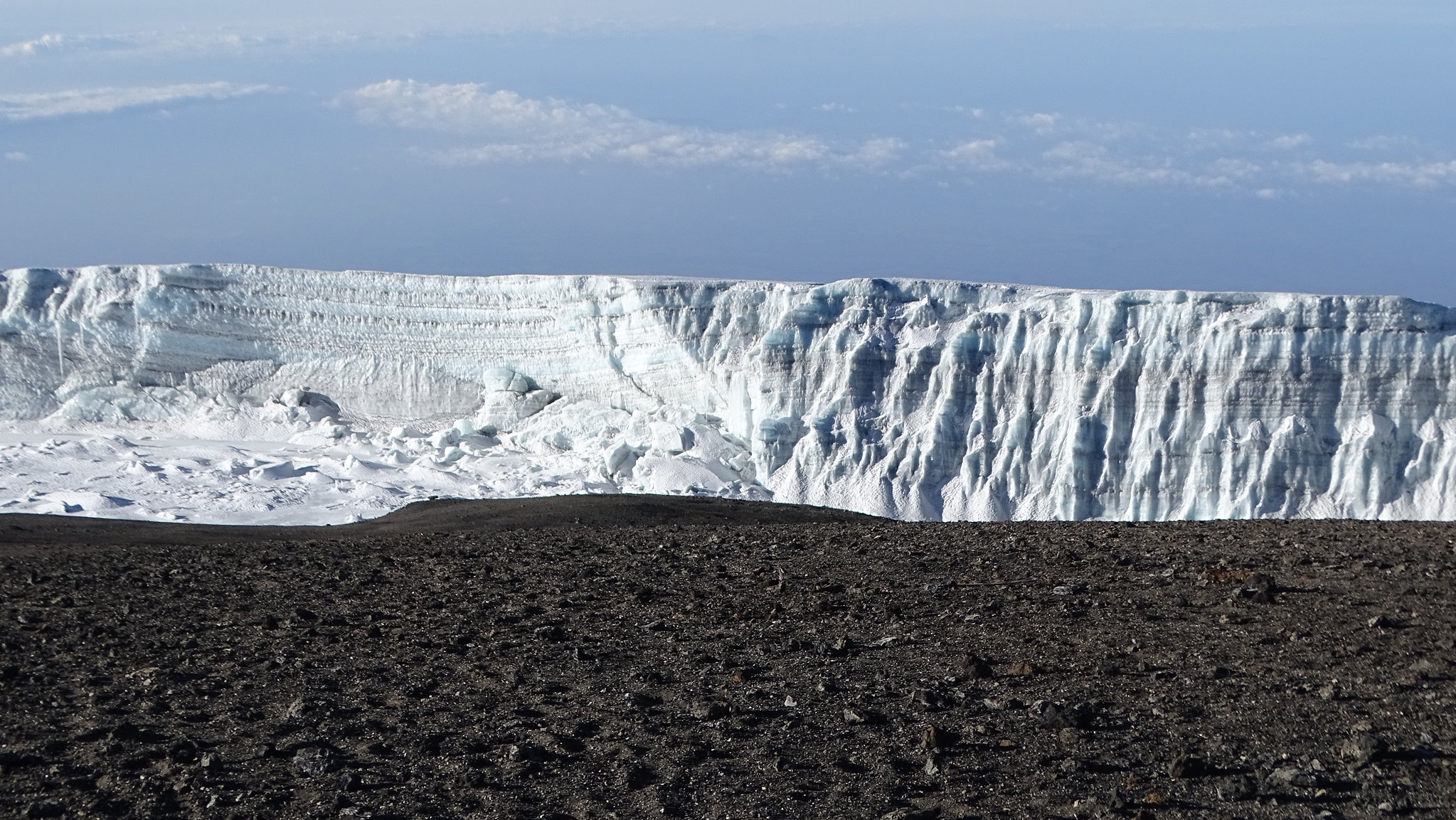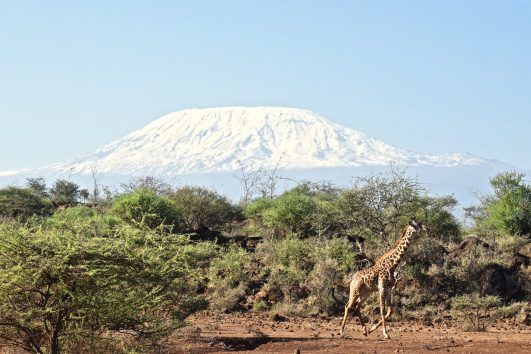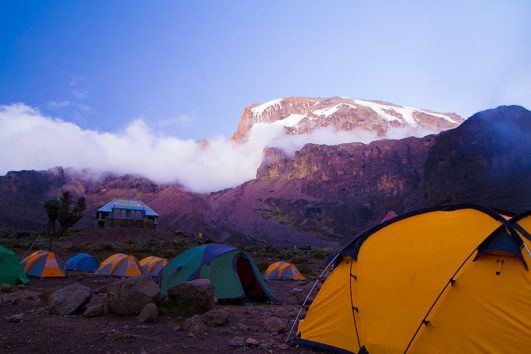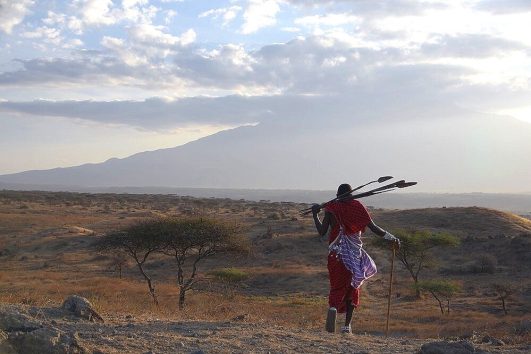Credner Glacier Elevation / Altitude: 5,800 meters
Credner Glacier is situated on the northwest slope of Kibo Peak on Mount Kilimanjaro and is one of the largest glaciers on the mountain. This glacier is what presently remains of an ice cap that used to exist on Mount Kilimanjaro’s summit.
Resting at an elevation of between 5,800n – 5,500 meters (19,000 ft – 18,000 ft, the Credner Glacier descends from the Northern Ice Field. According to research conducted recently, it is believed that in the next 10 years or so, the Glacier way cease to exist as it is rapidly diminishing in size due to its high exposure point on the northwest slope of Mount Kilimanjaro.
Credner Glacier is one of the various outlet glaciers feeding from the greater northern ice field including other glaciers like the Drygalski Glacier, and (Great and Little) Penck glaciers), the Uhlig glacier, and the two distinct glacier streams that are found around the Western Breach area (the Little and Great Barranco glaciers).
Facts about the Credner Glacier
– Located near the Northern Icefield
– One of the largest glaciers found on Mount Kilimanjaro alongside the Furtwangler Glacier , though it is receding at an alarming rate. -Estimated extinction: By the year 2030, the Credner Glacier will have disappeared.
Location of the Credner Glacier
The Credner Glacier is located in the north-western part of Tanzania’s Mount Kilimanjaro and due to this location on the mountain summit of Kibo, there is no other glacier on Kilimanjaro that receives more sunlight than the Credner Glacier. This Glacier in Mount Kilimanjaro’s Peak is believed to have lost half of its size in the past 10 years alone, a fact that worries researchers that if this trend continues we might lose the Credner Glacier in the next 5 years or so, and by the year 2030, this glacier would not exist anymore.
The Credner Glacier is located closer to the summit in the arctic zone of Mount Kilimanjaro and extends down the northwest flank of the mountain.
Herman Credner
The Credner Glacier was named after the German Earth Scientist, Carl Hermann Georg Credner who was the son of Carl Friedrich Heinrich Credner who was a German Geologist.
The crew took a short break after climbing the glacier for two hours before moving on to journey to the Northern Icefields’ ice massif. It was climbed by a ten-meter ice wall. A mixed couloir climb from the crater to Uhuru Peak was the final step, and climbers arrived at Kilimanjaro’s summit at about 16:00.
After 22 hours of labor, the team arrived at Camp Millennium around 9 p.m. The climbers traveled to the Marangu gate the following day, where the National Park had officially recognized their ascent as a new route. The route was given the name “Thomas Glacier Route” in honor of the creator.
Additional information
| Routes | All Routes |
|---|---|
| Vegetation | Arctic Zone |




